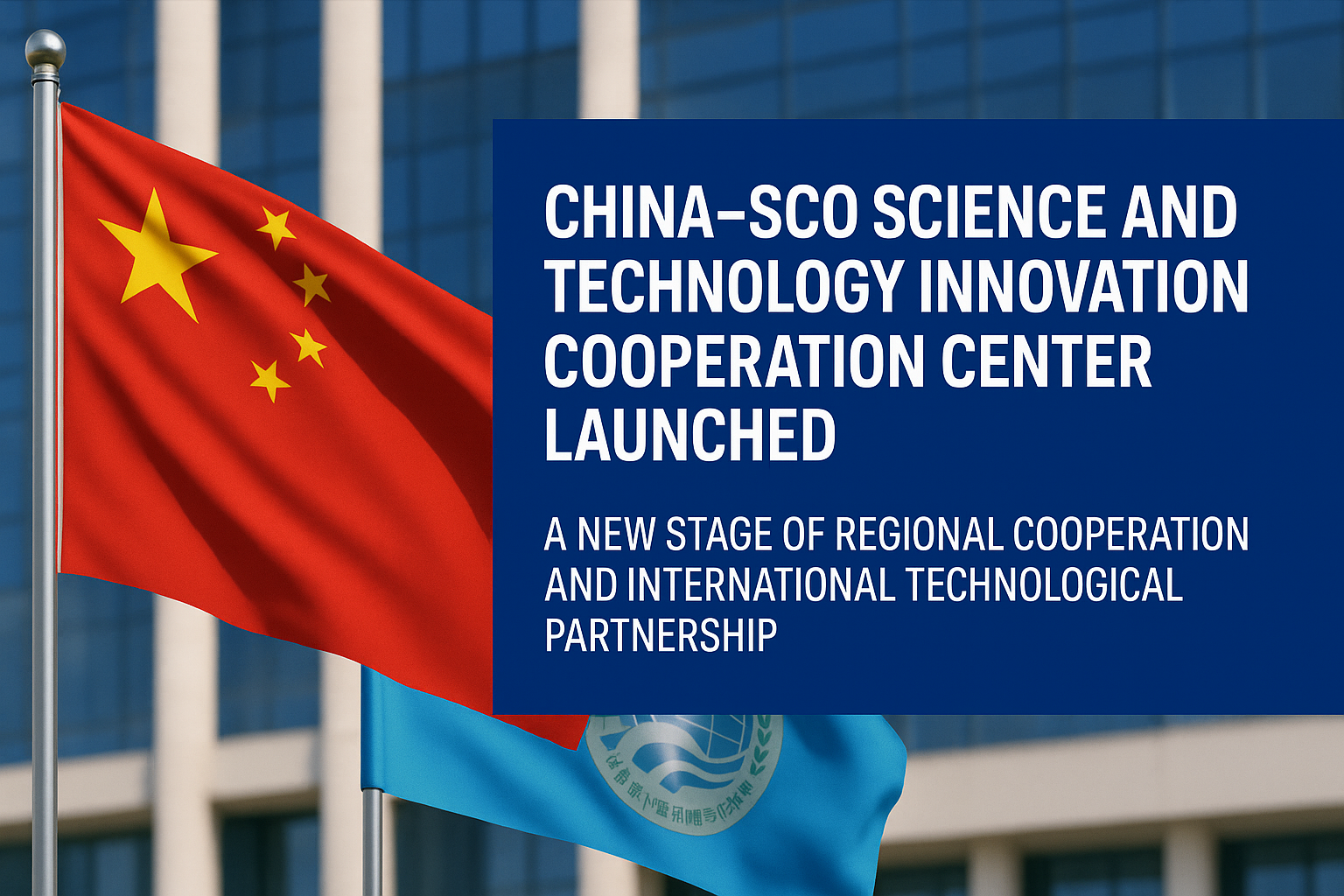News Overview
On September 4, the “China-SCO Science and Technology Innovation Cooperation Center” was officially inaugurated in Qingdao, Shandong Province. At the same time, ten international cooperation projects were launched, spanning diverse fields such as biomedicine, high-end equipment, and modern high-efficiency agriculture. Going forward, the Center will promote joint R&D among SCO member states, technology transfer, and the advancement of intellectual property services, while also strengthening talent development and intellectual support through initiatives such as youth innovation and entrepreneurship contests and the establishment of international think tanks.
Background: The Importance of Science and Technology Cooperation within the SCO
The Shanghai Cooperation Organization (SCO), a regional cooperation body centered on China, Russia, and Central Asian countries, has historically focused on security and economic cooperation. In recent years, however, it has positioned “scientific and technological innovation” as a new axis of cooperation. Driving this shift are:
- Intensifying global competition for technological supremacy
- The urgent need to address challenges in food, energy, and healthcare
- The rising necessity of R&D costs and IP strategies that no single country can handle alone
As a result, the significance of “regional integration through science and technology” is increasing.
Significance of the Inauguration
The establishment of the Cooperation Center and the launch of ten major projects are notable for the following reasons:
- Expansion of industrial fields
Covering a broad range of sectors, from medicine to agriculture and equipment manufacturing
- International talent exchange
Nurturing the next generation through youth innovation and entrepreneurship contests
- IP and technology transfer systems
Accelerating licensing agreements and the standardization of technologies among member states
- Think tank collaboration
Building a system of “brain circulation” linking policy, academia, and industry
China’s Strategic Intent
For China, the Center functions as a hub of “technology diplomacy.” Qingdao, as a port city, carries geographic strategic significance that aligns with the Belt and Road Initiative. Through scientific and technological cooperation, China aims to:
- Build a China-led international innovation ecosystem
- Gain leadership in international standards and patents
- Strengthen ties with Central and South Asian countries
Future Prospects and Challenges
Prospects
- Growth of “joint patents” and “joint R&D projects” within the SCO region
- Expansion into next-generation industrial fields such as AI, renewable energy, and agricultural digital transformation (DX)
- Strengthening the industrial base of member states through technology transfer
Challenges
- Unequal distribution of benefits due to economic disparities among member states
- Coordination costs arising from differences in IP management systems
- Geopolitical risks, including pressures toward technological decoupling from the U.S. and Europe
Conclusion
The inauguration of the China-SCO Science and Technology Innovation Cooperation Center is not merely the creation of a new research institution, but a symbolic milestone of “regional integration through science and technology.” Its outcomes are expected to influence not only the biomedical and agricultural sectors but also the fields of international patents and technology standardization, potentially elevating the technological capacity of the SCO region. At the same time, as the international community faces accelerating “technological bloc-ization,” it remains to be seen whether this initiative will foster new divisions or serve as a model of co-creation. Continued observation will be essential.

